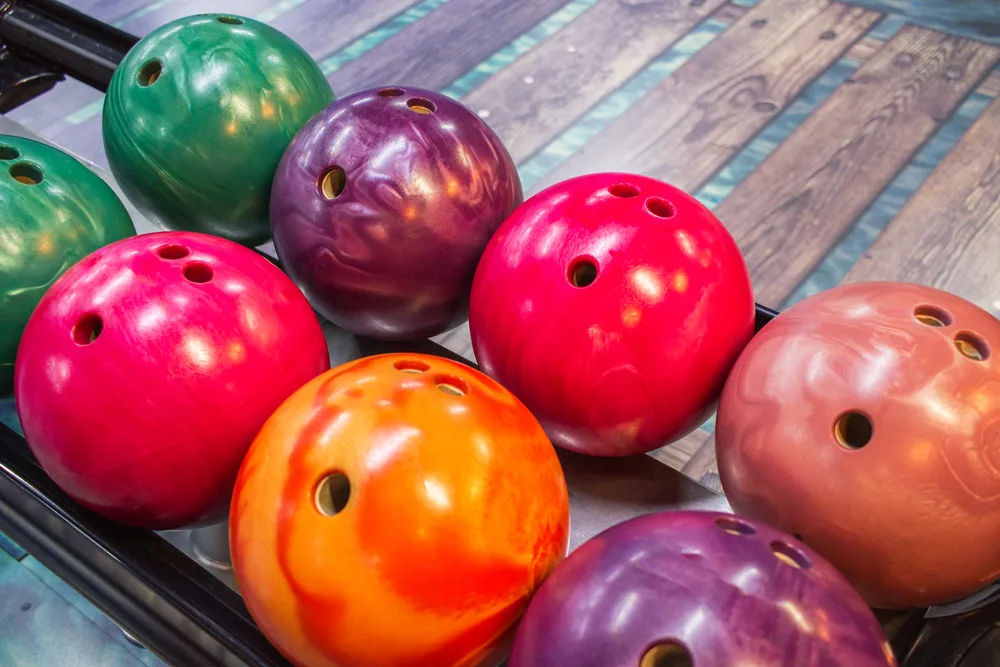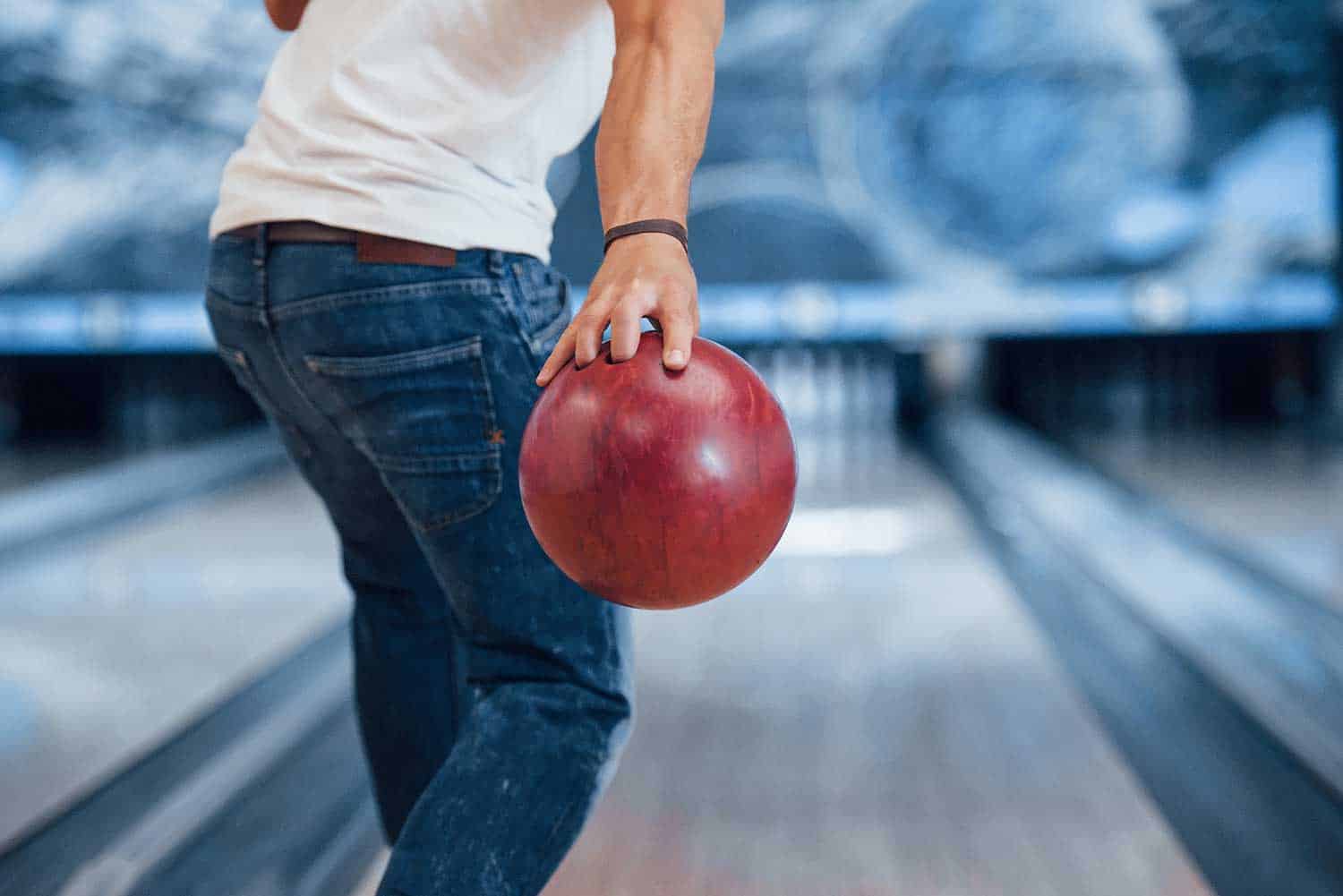Bowling balls come in various sizes, shapes, and weights. One of the most important parts of a bowling ball is its weight. It’s used to keep your fingers steady on the lane and it also helps you balance when your aim is perfect.
There is more to choosing a bowling ball than simply picking up the heaviest one available. There are a few things you need to consider, such as how often do you play a game of bowling, what kind of bowling lanes you use, and how much money you’re willing to spend.
In general, if you want to buy a new bowling ball, you should find out how old your current ball is. If it has been around awhile, then maybe you can still go ahead with buying a brand new one. However, in some cases, replacing the entire set will be cheaper.
You can use a quality bowling ball that lasts longer, so it won’t break down as fast as a cheap one would. Also, a good bowling ball might last you several years.
The History of Reactive Resin Bowling Balls
Reactive resins have been around for a long time. In fact, they were first used in the 1920’s as part of a process to create synthetic rubber. This is why the term “resin” was chosen to describe these materials. However, the use of reactive resins wasn’t limited to the production of rubber.
Today, the most common uses of reactive resins include manufacturing plastic products like bowling pins and tennis rackets. Some other applications are the creation of jewelry, dental fillings, and even paint.
There is one thing that makes this type of material unique though: it can be shaped into any shape. For example, you could make a ball from the same material that would look exactly like an actual bowling ball.
This is how reactive resins work. First, they’re mixed with liquid monomers to form a sticky substance. Then, the mixture is placed in an oven where it hardens. As you might expect, this process takes place quickly. In fact, the reaction between the two chemicals happens so fast that the resulting product looks just like regular resin.
The great thing about reactive resins is that they are made using natural resources. Therefore, there are no harmful byproducts when they are created.
How to Play with a Reactive Resin Bowling Ball
Bowling balls have been used by humans since ancient times. For example, archaeologists found a clay bowl that was made thousands of years ago. The bowls were shaped like a sphere, and they could be rolled down an inclined plane. This means that the first people who played with the bowling balls did so while standing on the ground.
However, the game evolved over time. People began using wooden frames instead of just rolling their own. In addition, modern bowling lanes are built at a slight incline to help prevent injuries to the players. So, how exactly does a modern bowling ball work?
Modern bowling balls are usually made from plastic or rubber. However, there is one type of bowling ball that’s made entirely out of a special kind of resin. You can use these types of bowling balls to practice your skills without hurting yourself. In fact, the resin balls don’t bounce as high, and they’re more durable than other kinds of balls.
You may wonder why people would make a bowling ball out of a material that reacts to water. Well, it turns out that the resin absorbs moisture, which makes it easier to clean.
What Is the Difference Between a Reactive Resin and a Non-reactive Resin?
When you’re looking to buy resin, it can be difficult to know whether a product will react with your paint. Fortunately, this article explains exactly how to identify the best resins for use in art projects.
There are two main categories of resin: reactive and non-reactive. Reactive resins contain chemicals that can cause damage to the surface of the piece of artwork you’re working on. Non-reactive resins don’t have any harmful effects, so you won’t need to worry about them reacting with your paints.
Reactive resins are usually found in smaller bottles, while non-reactive resins come from larger containers. The most common examples include acrylic, polyurethane, and epoxy. However, there are other kinds of resins that you may want to consider, including cyanoacrylate, alkyd, shellac, urethanes, and latex.
As mentioned earlier, you should avoid using reactive resins if you’re planning on painting your project. They could potentially harm the finish of your work. On the flip side, non-reactive resins are safe for use in almost all art projects.
Pros and Cons of Reactive Resin Bowling Ball?
Reactive resins have been used in making various products. One such product is the bowling balls. There are pros and cons of using these balls. Let’s take a look at them.
Pros:
1. The cost of buying the ball is very low.
2. The weight of the ball is light.
3. The ball can be easily repaired.
4. You can use the same ball for many years.
Cons:
1. The ball can break down after a few uses.
2. You need to maintain the ball.
3. The ball is difficult to clean.
4. The ball is heavy.
5. You cannot control the speed of the ball.
6. The ball is hard to grip.
7. It is expensive.
8. It takes time to get the right size.
9. It is difficult to find a replacement for the ball.
10. It is not easy to make the ball.
11. It is difficult to repair it.
12. It is difficult to keep the ball in good shape.
13. The ball does not last long.
14. It requires a lot of maintenance.
15. It is not durable.
16. It needs more space.
17. It is noisy.
Are Resin Bowling Balls Good?
If you’re interested in finding the best way to clean your bowling ball, then you might be wondering whether you should use a chemical cleaner, such as a dish soap, or a non-chemical cleaner, like baking soda.
When you first buy your new ball, make sure that it’s cleaned properly. You don’t want to have any chemicals on the surface of the ball.
Afterwards, just wipe it down with water. If you’d rather, then you can use a dry cloth. But, if you go this route, you’ll need to keep an eye out for the drying time.
You shouldn’t use a chemical cleaner on your bowling ball. This will leave a residue on the ball that could cause problems later on.
Instead, you should use a non-chemical cleaning agent. For example, you can mix up some baking soda and water. Then, you simply rub the mixture into your ball.
This method is safe because it doesn’t contain harmful chemicals. It also works well, since you won’t have to worry about damaging your ball.
But, if you do choose to use a chemical cleaner, make sure that you follow all of the directions on the bottle. Doing so will ensure that you get the most out of your bowling ball.
How Long Do Reactive Resin Bowling Balls Last?
A great way to make your own bowling ball is by using a mold. The process of making a mold can be done easily, but it takes time. There are many different kinds of molds that you can use, such as clay, plaster, sand, wood, plastic, and metal.
There are also several ways that you can use to create a bowling ball. You could use fiberglass, epoxy, and polyester resins. Each type of material offers its own set of advantages and disadvantages.
How Do You Throw a Reactive Resin Bowling Ball?
Reactive resin is used in many different applications. One of the most important uses of this material is in the manufacturing of bowling balls.
In order to create a bowl that reacts to the force of the bowler, the resin needs to be mixed with other chemicals.
This type of mixture will react to the impact of the ball on the pins. This reaction causes the ball to change shape, thus creating the desired effect.
It takes approximately 15 minutes for the resin to harden after being poured into the mold. Afterward, the balls need to cool down before they can be removed from the molds.
A bowling ball made of reactive resin is much more durable than regular bowling balls. In fact, it has been found that these balls last longer and are easier to maintain.
Because the resin is so strong, it makes it very difficult to break. Even though the resin is stronger, it still breaks under extreme pressure.
The best way to prevent this from happening is by using a softer resin. The softness of this resin allows you to use less power when throwing the ball.
You should also make sure that you don’t overuse your hands while you’re bowling. You shouldn’t hold onto the ball for too long, or else you might damage the resin.

How to Choose a Reactive Resin Bowling Ball
Reactive resin is the most popular material used in making balls. This type of ball can be made from different materials, but the most common one is polyethylene (PE). PE is usually combined with other resins like phenolic, epoxy, urethane, etc. There are two main reasons why this type of ball is so popular:
1. It provides excellent performance.
2. It is very easy to make.
If you want to know how to choose a reactive resin bowling ball, then you need to understand these two facts. The first thing that you should look for in a bowling ball is the weight. If you’re looking for a heavy ball, then you can use a reactive resin bowling ball. However, if you’re planning on using a lighter ball, you might have to go for something else.
You also need to consider the size of the ball. A bigger ball is more stable and easier to control than a smaller one. However, it will feel heavier.
Another important factor is the shape of the ball. You may notice that some balls are round while others are square. Round balls are much easier to hold onto. But, they are less responsive. Square-shaped balls are harder to catch and throw.
Finally, you should take into account the coating.
How to Improve the Performance of a Reactive Resin Bowling Ball
There is no doubt that the reaction resin balls have become very popular. And, there are many reasons why you should consider buying one. The main advantage of using a reaction resin ball is that it provides a great deal of control. This means that you will be able to create more spin on your shot, and this will make it easier to knock down the pins.
However, there are some drawbacks associated with these balls. One of the most obvious problems is that they can break easily. If you want to know how to fix this problem, then read the article below.
If you’re looking for a way to improve the performance of a reaction resin bowling ball, then you need to use a little bit of care when it comes to storing them. You shouldn’t keep your balls in direct sunlight or store them at extremely high temperatures. Instead, you should try to maintain a cool environment.
You also need to clean your balls regularly. When you do this, you’ll reduce the risk of mold forming on them. Mold is not good for your ball. It will cause damage to the surface, and that could affect the performance of your ball.

